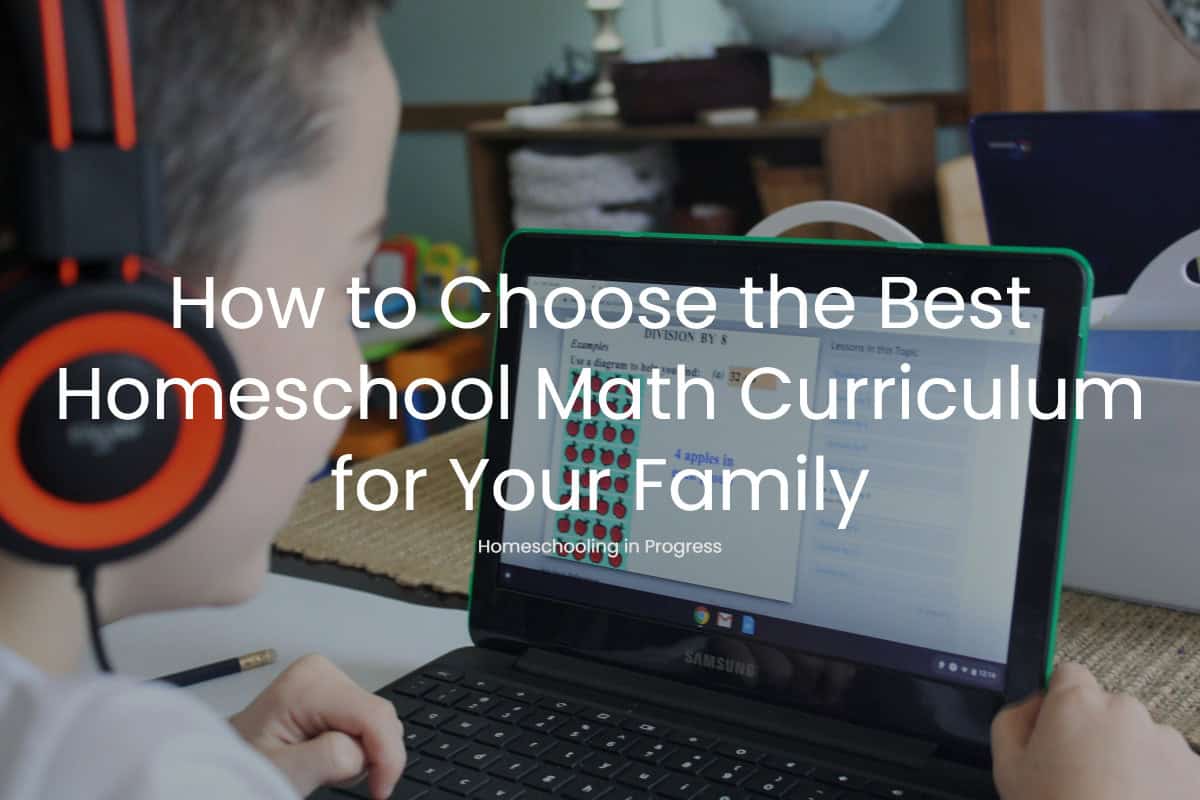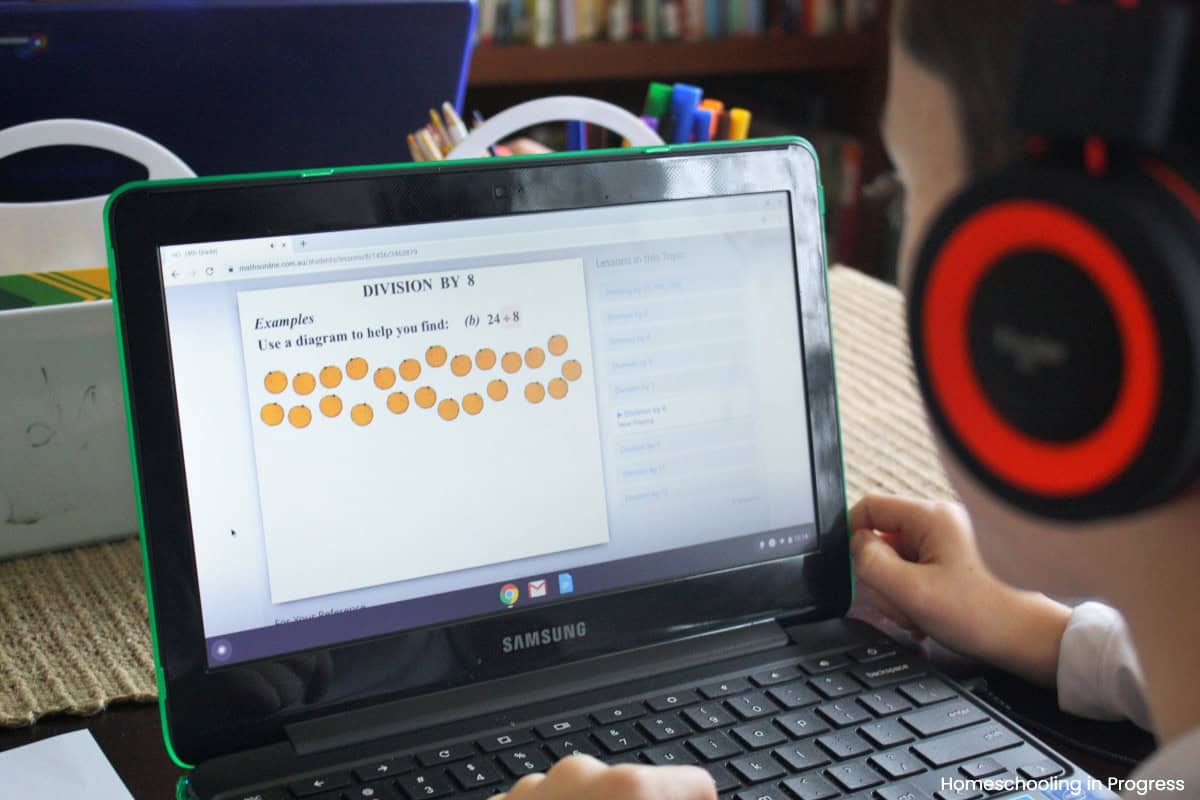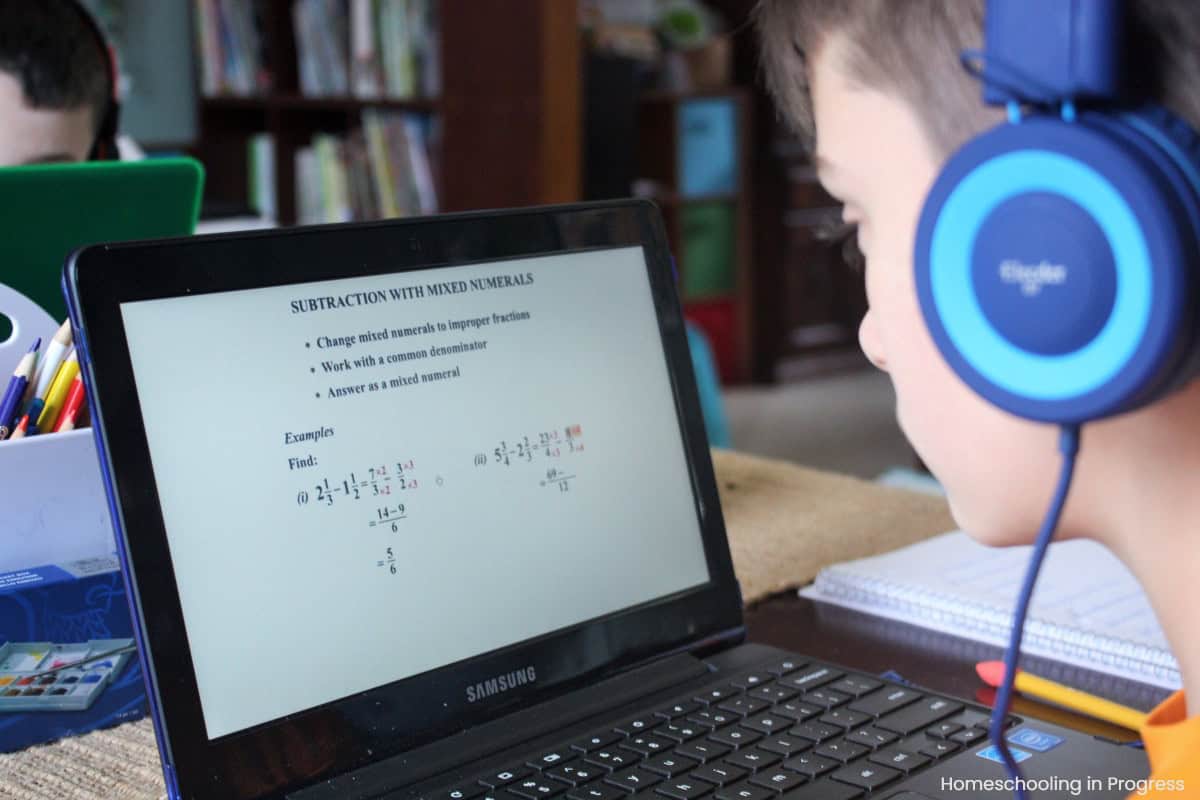How to Choose the Best Homeschool Math Curriculum for Your Family
Choosing the right math curriculum for your homeschool can be overwhelming. Learn how to evaluate and select the best core math program that fits your family’s unique learning needs and goals.

I love math.
Yes, I was that kid in school who got excited when the teacher gave 30 math problems for homework. I would rush home to happily sit and work out each one, wishing more had been assigned.
So when we decided to homeschool our children, math was one of the subjects I was most excited to teach.
However, math quickly became one of the biggest causes for tears in our homeschool. From the kids and me. Unfortunately, some of my children were not born with my love of math. In fact, a couple downright despise it.
So it became a quest to find the math curriculum that best fits our homeschool’s needs. One that does not produce tears. One that does not have rows and rows of problems to work on. But a program that also involves me as their teacher.
How can you find a curriculum that fits all of your family’s requirements?

Disclosure: This is a sponsored post for CTCMath. I received free access to the product and was compensated for my time. I am not required to give a positive review and all opinions are my own. This post contains affiliate links.
Homeschool Math Curriculum Methods
When choosing math curriculum for your homeschool, you should first decide what type of teaching method you would prefer. Two methods of teaching math are mastery and spiral.
Mastery Approach
When it comes to math, a mastery approach is similar to the approach of teaching math in traditional schools. This method divides concepts by chapters and lessons within each chapter. The idea is that children will focus on one topic, learning everything they need to cover for the year in that topic before moving on to another one.
For example, a chapter on fractions might include lessons on equivalent fractions, reducing fractions, and adding or subtracting fractions. Then the children take a test at the end of the chapter to assess their knowledge of fractions. Afterwards, they would move to the next chapter to learn a new concept.
Spiral Approach
The spiral approach is an additional method for teaching math concepts. With this method, children learn different concepts in each lesson while also continuing to review previously learned concepts. Tests include multiple concepts from previous lessons. The idea with the spiral approach is to have children continually review concepts so that they do not forget them once that lesson is over.
For example, one lesson may cover equilvalent fractions while the following day the lesson covers the area of squares. In the day’s math problems to work on, the student will see several problems on finding the area of squares. However, the student will also see a couple problems on finding equivalent fractions and perhaps a couple from another previous lesson on multiplying by 10s.
Homeschool Math Curriculum Choices
Many math curriculum exists that cover either a mastery or spiral approach. You may need to try each method to figure out which works best for your children. Also, know that your children may not all learn best from the same method. For example, my daughter enjoyed the spiral approach while my boys seem to do better with a mastery approach.
Textbooks
Math textbooks are probably what many homeschoolers begin with when they start homeschooling. Most of us were also probably taught this way, so it’s familiar. We began with this route as well.
We have tried textbooks using both the spiral and mastery approach. My daughter loved the spiral approach. She enjoyed learning about different concepts everyday and not having to spend weeks on just one.
My boys like the mastery approach more, especially my son with ADHD. I figured the spiral approach would be better for him, but he had difficulty going from one concept to another in the problems. I also thought the mastery approach was good for learning multiplication facts.
Living Books
Living books are an approach that works very well with many children. They tell a story, teaching concepts within that story format. The book may cover only one math concept, or it may use more of a spiral approach, especially if the book is longer and includes chapters. Instead of tests, knowledge of the concepts is assessed through narration of the book or through written tests at the end of a term.
Some homeschooling families teach exclusively with living books as their main math curriculum, either using a living book series or choosing picture books to cover certain concepts. In our homeschool, we use them as a supplement during our morning basket time.
Online Math Program
A final example of math curriculum is an online program. Again, just as with the other examples, online math programs may use a spiral or mastery approach to teach math concepts. These programs may be the complete core math curriculum used, or they may be used as a supplement.
We have tried all of the above methods available for teaching homeschool math throughout our years of homeschooling. Depending on the year, various methods have worked or not. Currently, CTCMath’s Homeschool Family membership is an online math program that fits my family’s homeschool math curriculum needs.
How CTCMath Fits Our Homeschool Math Curriculum Needs
CTCMath is a program that does not produce tears in our home, which is a major step up from some of the textbooks we’ve previously used. The short lessons are a major bonus for my son, who not only has ADHD but also despises math. It’s also a program that involves me, as a math-loving mom, in my children’s math curriculum. Using an online math curriculum also makes it easy to create a simplified homeschool routine.
How to Use CTCMath in Your Homeschool
How I Use CTCMath as the Homeschool Parent/Teacher
In our homeschool, we use CTCMath as our main curriculum. I have complete control over which math concepts they learn each week. So each weekend, I choose four concepts I’d like the boys to learn the following week. A nice benefit with CTCMath is that I can choose concepts that build off of each other, such as in a mastery approach. But I can also pick and choose concepts that I’d like my children to learn or even review, which is more of a spiral approach.
I add these lessons into a Weekly Task List for each student, which allows me to choose which lessons they learn in which order. Then I also include a Question Bank to test them over those lessons on Friday. I can decide how easy or challenging the questions are, as well as include previously learned concepts as review.
Because CTCMath emails weekly progress reports to me, I am always aware of their progress. This helps me decide if my boys need further review of a concept, or if we can move on before I plan the following week’s lessons. CTCMath gives the homeschool teacher control to decide how to best use the program as a guide for learning.
I feel like this program is a win-win for me. I get to be involved in my boys’ learning, which as a math-lover I appreciate. But I don’t have to do the actual teaching, which caused a lot of stress and frustration in the past.

How My Children Use CTCMath as Homeschool Students
When we began using CTCMath in our homeschool, the boys chose the usernames and passwords they wanted for the program. So each day when it’s time for math, they open up their Chromebooks to the program and sign in themselves.
There they’ll be able to click on the week’s task that I set up and begin the day’s lesson. Each lesson includes a short video tutorial explaining that day’s concept. The boys are able to watch the video as often as needed until they feel they understand. Then they complete the day’s math problems to assess their knowledge of the concept. I can decide that they need to obtain a certain passing grade to complete the lesson.
Benefits of Using CTCMath
CTCMath includes many benefits that we enjoy in our homeschool.
I have control over the math concepts my children learn and can choose what they learn and when. I can even move among grade levels if my child needs to get a stronger foundation on a previously learned topic, or is ready to move ahead on another.
CTCMath requires little planning time. I spend a few minutes each weekend deciding what concepts to cover and then my work is done.
Someone else does the actual teaching. Math would take up so much of our homeschool day in the past, which left me little time to work one-on-one with each child in other subjects. CTCMath frees up my time.
I receive weekly progress reports through email. These reports show how many times my children attempted the lesson to receive a passing grade. I also can look at specific problems they miss to see if they didn’t understand the concept or just made a silly error.
It’s all online. I wasn’t sure at first if doing math online would work for my boys. But they are actually more focused on their math with an online program than they were using textbooks. However, I do still have an option to print out worksheets if I’d like.
The lessons are short. One of the reasons for tears from previous math programs is the amount of problems assigned for each lesson. CTCMath’s lessons are short, which gives my boys a feeling of accomplishment when math doesn’t take all day to finish.
If you aren’t sure CTCMath is a good fit for your family, they offer a free trial so that you can try it out for yourself before spending money on the program. You should definitely give it a try and see if it fits your family’s homeschooling needs. When you realize it does fit your family’s needs, you’ll be thrilled that homeschoolers receive a half-price discount!

Choosing math curriculum for your homeschool is a big responsibility. However, once you decide which method to follow and which program to use, math should be a time of the homeschool day that is welcomed.


